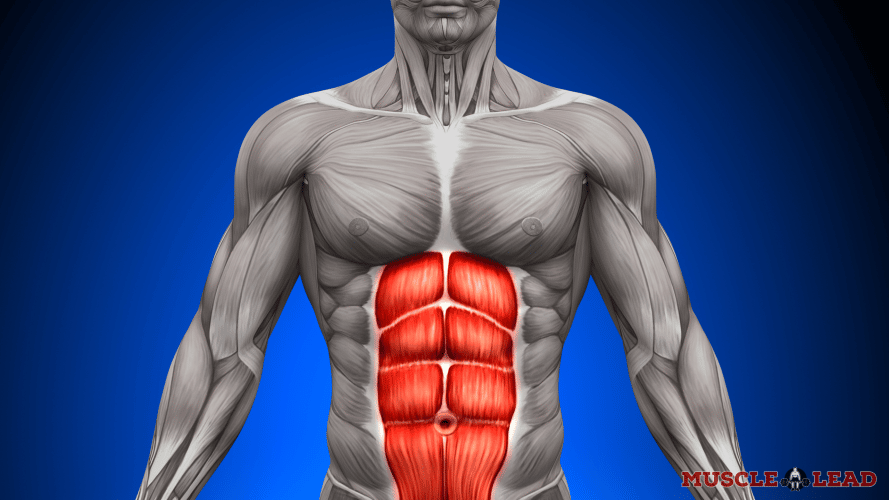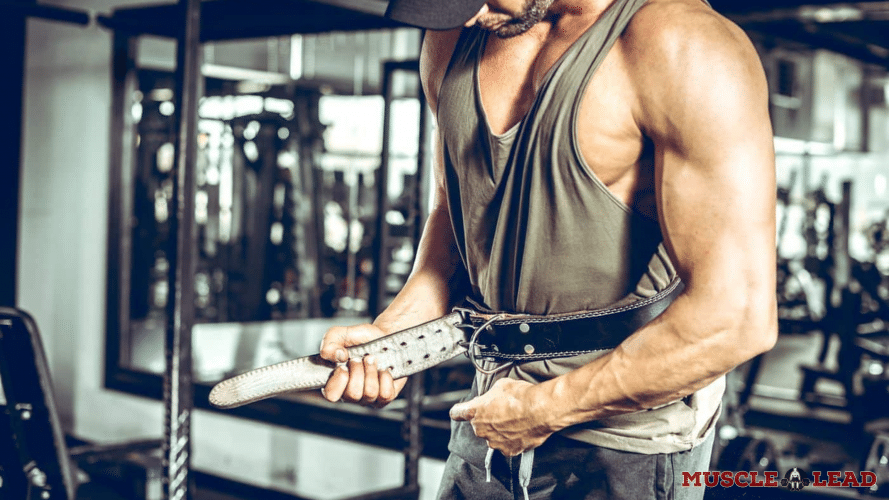Key Points
- The weightlifting belt can build more pressure around the midsection and maximize lifting capabilities.
- During lower training intensities of <70%, you may not need a weightlifting belt, as the core muscles are probably strong enough to sustain the loads without a little extra help.
Fear mongering has led many lifters’ to retreat into a shell when they hear ‘Weightlifting belt’.
Well, not in the literal sense, but they’re certainly against the idea of using one for their major lifts. These lifters seem to have developed this preconceived notion that the weightlifting belt somehow weakens the core’s natural ability as a trunk stabilizer.
Another worry among lifters is that the lifting belt will prevent muscles from working effectively during a lift. In turn, lifters could lose out on gains.
So, does a weightlifting belt make your core weaker? No, a lifting belt does not make your core weaker. The purpose of a lifting belt is to help stabilize your spine during heavy lifts. Your overall trunk muscles can support heavier weights with a lifting belt with the increased IAP and stiffness. For best results, you should also train without a lifting belt so you can develop core strength naturally.
In this article, we aim to debunk these ideas. But first, we go over the 6 core muscles and what the weightlifting belt does for the core.
The Core Stability Muscles
So what core muscles are involved in lifts? Well, let’s start with the biggest one.
Rectus Abdominis
The rectus abdominis is the glory muscle group. When you flex your abs you isometrically contract this muscle group. These are your six pack abs.

Erector Spinae
Few lifters realize that this muscle is actually part of your core. The spine is part of your trunk and the erector spinae stabilizes the spine during lifts. Overall, this muscle is made of 8 smaller muscles and a tendon.
Transversus Abdominis
The TVA is what bodybuilders work on to achieve that vacuum look. This muscle isn’t visible but instead, it is a deep muscle behind the 6 pack. Overall, the muscle keeps the spine in a neutral position.
Obliques
The internal and external obliques are core stability muscles that run down the side of the trunk. These muscles can be deep or superficial. During lifts and exercise, these muscles prevent your trunk from rotating.
Pelvic Floor Muscles
Not as recognized but super important. These pelvic muscles are invisible and located in the lower trunk of the body. They can play a part when bracing for lifts but they also help stabilize the spine.
Multifidus
The multifidus goes down the spine and contributes to stability. In fact, this muscle is the thickest and strongest in your lower back. Many lifters work on this muscle to prevent lower back pain for future lifts.
Core Activation During Lifts
How does the core activate during lifts? Which muscles get involved in certain movements.
Overall, the core muscles keep your trunk together. They support movement and prevent instability in your pelvis, spine, and abdominal cavity.
As muscles, contract and lengthen to prevent your ribs from injuring. These core muscles tighten to resist getting crushed or harming important body parts.
Your core is involved in all your lifts and movements.
Talk to anyone with lower back pain. Ask them what movements hurt and what movements aggravate the pain. These are all core focused movements.
Having a strong core allows you to lift more and stabilize your spine.
During the squat, your core and spine prevent the load from crushing you. During deadlifts, the core allows you to expand your torso and efficiently move the weight off the ground.
Core activation occurs through proper breathing and bracing.
Breathing and Bracing During Lifts
As a lifter, one of the first things your lean is how to breathe and brace for weight training.
For vertical movements such as the squat, you want to imagine going underwater as you squat. Take a deep breath in and expand your belly like a balloon. The expansion creates Intra-abdominal pressure and stabilizes your spine from misaligning.
Say you didn’t have enough core stability to perform a ‘heavy’ deadlift, chances are that the back would start rounding as you pull the bar towards the trunk.
What does the Weightlifting Belt Do for Your Core?
The weightlifting belt offers external pressure on the muscles of the core, thus creating a substantial amount of intra-abdominal pressure. (1)
This contraction helps with spinal neutrality (straight spine) during high-intensity barbell squats and deadlifts. Subsequently, this modification may maximize safety and exercise performance through more efficient lifts.

For example, let’s say that a lifter started using a belt for the barbell squat. They’ve begun to notice a stronger squat. So the lifter gains the confidence to slowly add more load.
As you get stronger, the lifting belt works to reinforce your strength by activating your core. Your core further becomes more efficient during heavy lifts.
Does Weightlifting Belt Make Your Core Weaker?
No!
But, where does this belief come from?
This idea probably stems from what the general population understands about injuries.
Say you break a leg, which is supported by a cast. After the recovery period, the cast is removed leaving a significantly smaller leg muscle from inactivity.
The same outcome does not occur from the weightlifting belt, as the core stability muscles are still active during the lifts. In fact, the muscles are even more active than lifting without it. They become stronger.
Secondly, injury risk is only increased from not wearing a belt during ‘heavy lifting’. Without that extra stability, some lifters could get hurt trying to lift very heavy as their core may not be used to it.
So a weightlifting belt does not weaken your core. It helps stabilize your spine and strengthen your core to increase loads for lifters.
The Weightlifting Belt and Lifting Strength
As I mentioned, many ‘gym goers’ have managed to convince themselves that the weight lifting belt takes away from the muscles during a lift.
According to a classic 2001 study, experienced lifters were able to get instantly stronger by 3-5% while performing barbell squats with a weightlifting belt.(2)
Some of you might be thinking that this study only validates the point of the belt doing the work.
Single Prong Vs Double Prong Lifting Belt – Which One is Best for You?
I don’t blame you, as it’s only Intuitive to the untrained eye, but let me tell you why these lifters may have brought forward more impressive squat lifts.
The lifters were able to actively engage their core stability muscles and keep the spine in a safe and neutral position. This outcome would shift the energy onto the working muscles, as opposed to losing it through the spine curving forward or moving around. (2)
This short-term modification may have long-term accumulative effects on strength and muscle gains, from activating more muscle fibers and higher muscle protein synthesis.
So, to put it simply, it’s quite the opposite, the weightlifting belt actually makes your muscles work harder and may build them up bigger and stronger over time.
When Should You Lift Without a Belt?
Weightlifting belts are generally used during heavy lifting of around 90% intensity.(2)
During lower training intensities of <70%, you may not need a weightlifting belt, as the core muscles are probably strong enough to sustain the loads without a little extra help.
By no means does this mean that you have to periodize the weightlifting belt from it affecting the natural ability of you to contact the core stability muscle group, as mentioned.
I’ve outlined an example of a lifter’s squat intensity, alluding to when you may benefit from using the weightlifting belt.
- 1 x 308 lbs = @100% intensity
- 2 x 292 lbs = @95% intensity
- 3 x 286 lbs = @93% intensity
- 4 x 275 lbs = @90% intensity
- 5 x 270 lbs = @87% intensity
- 6 x 264 lb = @85% intensity
- 7 x 253 lb = @83% intensity
- 8 x 242 lb = @80% intensity
- 9 x 236 lb = @77% intensity
- 10 x 231 lbs = @75% intensity
You can choose to add intervals of training without a lifting belt to allow you to develop your core muscles naturally. Some lifters benefit when training with a belt for a few weeks and then without a belt for a few weeks.
Be aware that you won’t be able to lift as much without a weightlifting belt due to the reduced ability to create intra-abdominal pressure. So, don’t go overboard.
FAQs
Definitely! The belt helps to maintain spinal neutrality and keeps the tension and energy in the muscles. It is possible to reap a 3-5% lifting gain immediately and on top of that the long-term muscle gains.
Not at all! They make you stronger and your core doesn’t get used to being supported to the extent where it gets weaker without using the weightlifting belt. You do not really need to periodize how you wear your belt contrary to common belief.
Final Thoughts
All in all, there are around 6 main core stability muscles that engage during exercises like the barbell squat and deadlift. These muscles help keep the spine in a safe and neutral position.
The weightlifting belt may build up more pressure around the midsection and maximize lifting capabilities.
By no means does the belt make the core weaker or more reliant. The only thing that changes when you opt to take your belt off during heavy lifts, is the risk factor of an injury and lower-quality lifts.
Similarly, it doesn’t take the tension away from working muscles during a lift, it actually further activates them.
You don’t need to periodize using the weightlifting belt for any specific reason, but you can opt to do so if you’re training with lighter loads <70% intensity.
References
- Oliva-Lovano, J.M., &., Muyer, J.M. ‘Core Muscle Activity during Physical Fitness Exercises: A Systematic Review’ International Journal Of Environmental Research And Public Health. 2020; 17(12):4306
- Zink, A. J., Whiting, W. C., Vincent, W. J., et al. The effects of a weight belt on trunk and leg muscle activity and joint kinematics during the squat exercise. Journal of Strength and Conditioning Research. 2001;15(2):235-240.
More on Lifting Belts:





